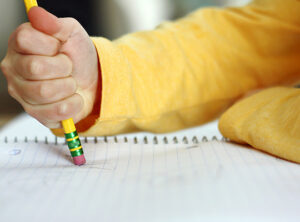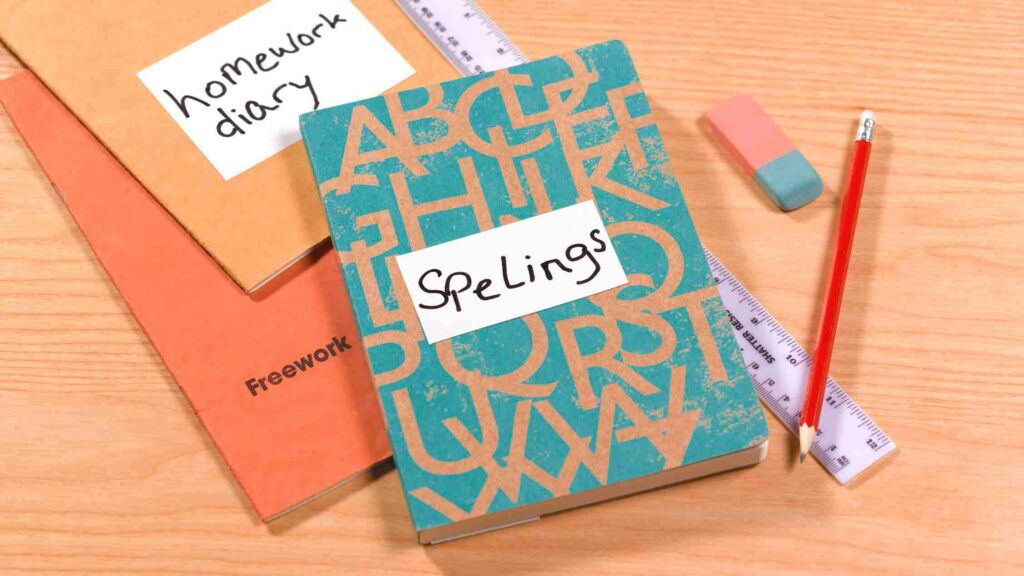Dysgraphia and ADHD are two conditions that often get confused. Many people don’t know the difference between the two, or even that they are two separate conditions. In this blog post, we will discuss the differences between dysgraphia and ADHD, as well as some of the symptoms associated with each condition. If you think your child may have one of these conditions, it is important to seek help from a professional.
Contents
Defining Dysgraphia And Its Symptoms
 Dysgraphia is generally defined as a neurological disorder that affects a person’s ability to write. It is a condition that can make it difficult for a person to produce legible handwriting or to spell correctly. People believed that dysgraphia was simply poor handwriting. But it is now known that the condition can affect all aspects of written language, including grammar, punctuation, and composition.
Dysgraphia is generally defined as a neurological disorder that affects a person’s ability to write. It is a condition that can make it difficult for a person to produce legible handwriting or to spell correctly. People believed that dysgraphia was simply poor handwriting. But it is now known that the condition can affect all aspects of written language, including grammar, punctuation, and composition.
There are different types of dysgraphia, but the most common form is developmental dysgraphia. This type of dysgraphia usually first appears in early childhood when a child begins to learn how to write. The child may have difficulty forming letters or may be unable to space words correctly on a line.
Dysgraphia can also be acquired later in life as the result of a brain injury or stroke. This type of dysgraphia is sometimes called neurological dysgraphia or acquired dysgraphia.
Symptoms
- Slow and labored handwriting
- Poor pencil grip
- Difficulty forming letters or numbers
- Inability to write within margins
- Illegible writing
- Omission or reversal of words or letters
- Inconsistent spelling
- Difficulty with some types of fine motor tasks, such as tying shoelaces
These symptoms can be mild, moderate, or severe. They can also vary from day to day or from task to task. Some people with dysgraphia may be able to write legibly on some days but not on others. And some may be able to write quickly and easily for some tasks but not for others.
Overall, it can be a difficult and frustrating condition to live with. It can impact every aspect of a person’s life, from school and work to social and emotional well-being. But with the right supports in place, people with dysgraphia can learn to manage their condition and lead happy and successful lives.
Defining ADHD And Its Symptoms
 ADHD is described as “a neurobehavioral disorder that affects a person’s ability to pay attention, control impulses, and manage activity levels”. It is believed to affect around five percent of American children and is more commonly diagnosed in boys than girls.
ADHD is described as “a neurobehavioral disorder that affects a person’s ability to pay attention, control impulses, and manage activity levels”. It is believed to affect around five percent of American children and is more commonly diagnosed in boys than girls.
According to studies, the symptoms of ADHD usually appear before the age of seven. However, they can also persist into adolescence and adulthood. Symptoms of ADHD include:
- Difficulty paying attention
- Easily distracted
- Forgetfulness
- Fidgeting or squirming
- Difficulty staying seated
- Excessive talking
- Blurting out answers before questions have been completed
- Trouble taking turns
- Interrupting others
These are some symptoms that are commonly associated with ADHD. However, it is important to remember that every individual is different and will experience the condition in their own way. If you think your child may have ADHD, it is important to speak to a healthcare professional.
How Do Dysgraphia And ADHD Connect?
 There is a link between dysgraphia and ADHD. However, it’s not clear what causes this connection. Some experts think that ADHD may be the underlying cause of dysgraphia. Others believe that dysgraphia can lead to symptoms of ADHD, such as inattention and impulsivity.
There is a link between dysgraphia and ADHD. However, it’s not clear what causes this connection. Some experts think that ADHD may be the underlying cause of dysgraphia. Others believe that dysgraphia can lead to symptoms of ADHD, such as inattention and impulsivity.
It’s also possible that both conditions share a common cause, such as a problem with the central nervous system.
Moreover, there are some similarities and differences as well between the two conditions. Let’s take a look at some of them.
Similarities
The similarities between dysgraphia and ADHD include:
- Both conditions can make it hard to focus.
- Both can cause problems with organization and time management.
- People with either condition may have trouble following directions.
These similarities can be frustrating for individuals and families dealing with either condition. It can be difficult to get an accurate diagnosis, as well as to find the best treatment options.
Differences
There are also some key differences between dysgraphia and ADHD. For example:
- Dysgraphia is a learning disability that affects writing skills. ADHD is a neurodevelopmental disorder that can cause problems with inattention, impulsivity, and hyperactivity.
- Dysgraphia can make it hard to write legibly. ADHD doesn’t usually affect handwriting.
- People with dysgraphia may have trouble with spelling. People with ADHD may or may not have this problem.
- Dysgraphia is primarily a problem with motor skills. ADHD can cause problems with executive functioning, which includes the ability to plan and organize.
These are some differences that make it easier to tell the two conditions apart.
If you or your child is struggling with either dysgraphia or ADHD, it’s important to seek out help from a qualified professional. A diagnosis can be difficult to obtain, but it’s important to get an accurate one so that you can find the best possible treatment options.
Also, it is important to understand that both dysgraphia and ADHD can be managed effectively with the help of a qualified professional. If you think you or your child may have either condition, don’t hesitate to reach out for help.
How To Manage Dysgraphia And ADHD?
 There are many ways to manage both dysgraphia and ADHD. Some of these include:
There are many ways to manage both dysgraphia and ADHD. Some of these include:
For Dysgraphia
For this, there are various ways that can help your child. These can be things such as:
Using a computer or laptop to write
This is a great way to help your child with dysgraphia. By using a computer, they can type out their thoughts and ideas much faster than they could write them down on paper. This can also help with the spelling and grammar errors that often come with dysgraphia. In fact, there are many programs and apps available that can help with this.
Allowing more time for assignments
This is a great way to ease the stress that comes with dysgraphia. By allowing your child more time to complete their assignments, they will be able to take their time and not feel rushed. This can also help them to focus more on their work and not be as easily distracted. Because assignments can often be overwhelming for children with dysgraphia, breaking them down into smaller tasks can also be helpful.
Working with a tutor
It is essential to get help from someone who understands dysgraphia. A tutor can help your child with the specific skills they need to improve their writing. They can also offer support and encouragement, which is so important for children with dysgraphia.
Using an outline
An outline can be a great way to help your child organize their thoughts. By having an outline, they will be able to see what they need to write about and how they need to structure their essay. This can also help with the spelling and grammar errors that often come with dysgraphia.
Improving fine motor skills
Occupational therapy is often recommended for children with dysgraphia. This is because it can help to improve the fine motor skills that are necessary for writing. It can also help to reduce the frustration that often comes with dysgraphia. In fact, motor skills are often one of the main areas that need to be addressed in children with dysgraphia.
For ADHD
 There are also many ways to manage ADHD. Some of these include:
There are also many ways to manage ADHD. Some of these include:
Structure and routine
People with ADHD often thrive with a set routine. Having regular times for school, homework, and extracurricular activities can help your child stay on track. Also, this is a good time to establish a regular bedtime routine.
Limit screen time
Screen time is actually a stimulant, which can make ADHD symptoms worse. Try to limit your child’s screen time to no more than two hours per day. This way, they’ll have more time for other activities that can help them focus, like playing outside or reading.
Eat a healthy diet
A healthy diet is important for everyone, but it’s especially crucial for people with ADHD. A diet high in sugar and processed foods can make symptoms worse. Instead, focus on eating whole foods like fruits, vegetables, and lean protein.
Exercise
Exercise is a great way to relieve stress and improve focus. It can be as simple as going for a walk around the block or playing catch in the backyard. Just make sure your child gets at least 30 minutes of exercise every day.
Organization
Creating a system for organizing school materials, papers, and belongings can be helpful. This may include color-coding notebooks, using a daily planner, or setting up specific places for items at home.
There are many other ways to manage ADHD, but these are some of the most common and effective. With the right tools and support, your child can thrive despite their diagnosis.
Professional Treatment Options
 When you feel like you or your child is struggling with writing, it can be difficult to know where to turn. You may have heard of dysgraphia, but aren’t sure what it is, or if it’s the same thing as ADHD. The good news is that there are professional treatment options available to help.
When you feel like you or your child is struggling with writing, it can be difficult to know where to turn. You may have heard of dysgraphia, but aren’t sure what it is, or if it’s the same thing as ADHD. The good news is that there are professional treatment options available to help.
Some of the options include:
Occupational Therapy
This professional treatment for dysgraphia and ADHD can help with the fine motor skills needed for writing. They can also work on things like pencil grip and paper positioning. It works best when it is combined with other treatments. Also, it is believed that the earlier a child begins occupational therapy, the better the outcome.
Visual-Motor Integration Training
This type of treatment is designed to help with the coordination between what a person sees and what they do with their hands. It can be done with activities like drawing and blocks. It can also be done with computer games. Moreover, it is recommended to be done for at least 30 minutes a day, five days a week.
Cognitive Behavioral Therapy
CBT is a type of therapy that is designed to help a person change their thinking patterns. It can be helpful for people with dysgraphia and ADHD because it can help them to stop negative thoughts about themselves. And instead, focus on positive thoughts. CBT can also help to improve organizational skills. In fact, it is often recommended to be done in combination with other treatments.
Medication Management
This is often done in combination with other treatments. It can help to improve focus and attention. It can also help with impulsivity and hyperactivity. However, it is important to work with a doctor to find the right medication and dosage. Medications are believed to be most effective when they are combined with other treatments. Some of the examples include:
- Stimulants
- Non-stimulants
- Antidepressants
These are some of the professional treatment options that are available for dysgraphia and ADHD. If you or your child is struggling with writing, be sure to talk to a professional about what might be the best option for you.
Dysgraphia and ADHD can be difficult to deal with, but there are treatments available to help. Be sure to talk to a professional to figure out what might be the best option for you.
Conclusion
To conclude, dysgraphia and ADHD are two very different conditions. However, they can both be extremely debilitating and make it difficult for those affected to live a normal life. It is important to seek professional help if you or your child are showing signs of either condition. With the right support, people with dysgraphia or ADHD can lead happy and successful lives.
For more information, please contact MantraCare. ADHD is a neurodevelopmental disorder characterized by difficulty in paying attention, hyperactivity, and impulsivity. If you have any queries regarding Online ADHD Counseling experienced therapists at MantraCare can help: Book a trial ADHD therapy session


